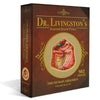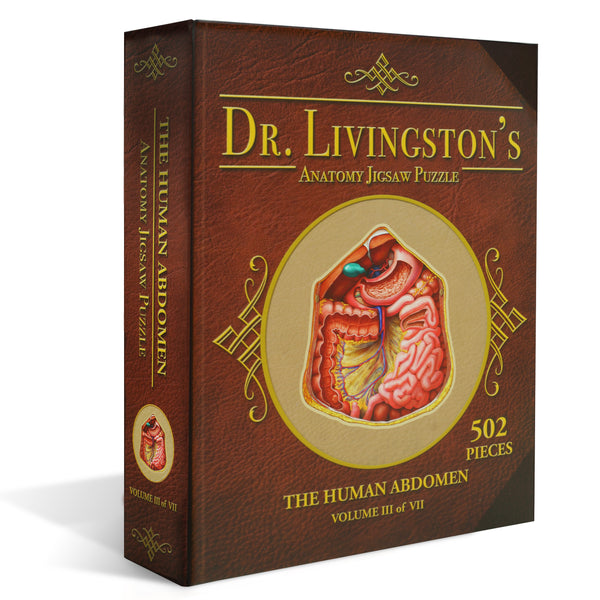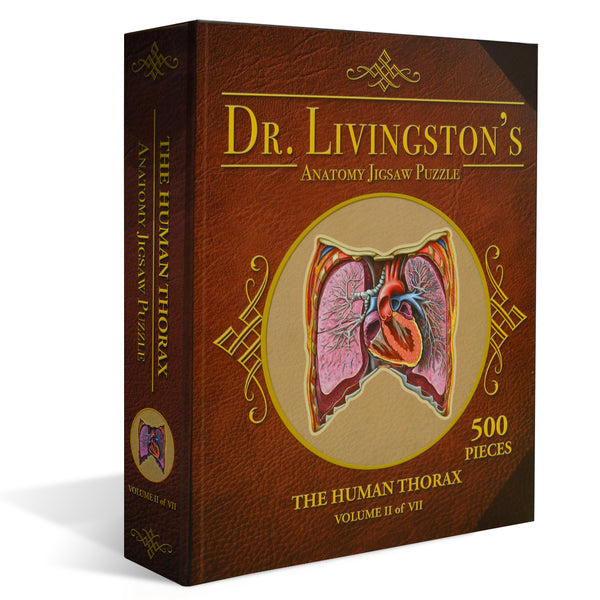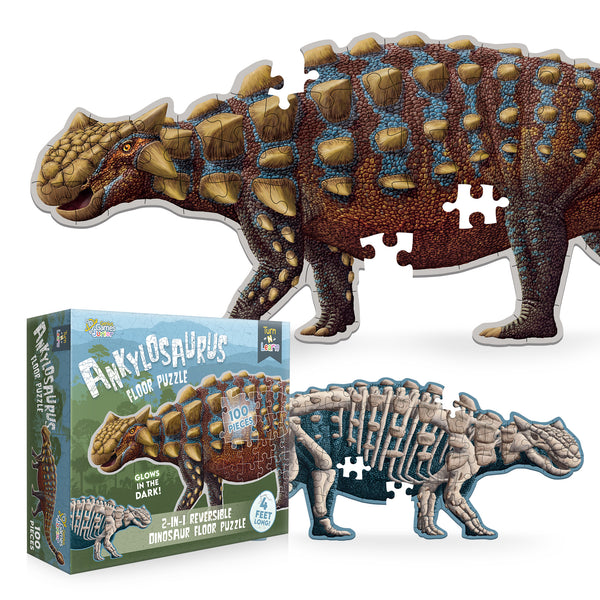In the first volume of Dr. Livingston’s Anatomy Jigsaw Puzzles, you’ll assemble a cross-cut section that gives you a clear view of the components of the head and neck. You’ll see how they interlock and overlap with marvelous complexity. Piece together the brain, and the thick, bony skull which protects the brain, and the jaw and teeth. You’ll assemble one eye and the muscles that support and move it. As you build the neck you’ll marvel at how it serves as an information superhighway - protecting the spinal cord, a concourse of blood vessels and nerves, and housing the esophagus, larynx, trachea, and thyroid gland. Complete the puzzle by fitting in the muscles of the neck which support and move the heavy head.
In the second volume of Dr. Livingston’s Anatomy Jigsaw Puzzles, you will assemble a cross-cut section of the human body that gives you a clear view of the entire rib cage and its contents. You’ll see how they interlock and overlap with marvelous intricacy. As you assemble this puzzle you’ll frame the organs with crosscuts of the the sternum, ribs, and thoracic vertebrae. Inside that protective cage lie a wealth of vital and vulnerable organs; the trachea carries air to the two lungs, and sitting between them, the four-chambered heart pumps blood through the pulmonary circulatory loop of the lungs. From there, once the blood is rich with fresh oxygen, it begins its journey through the systemic circulatory system to carry that oxygen to the rest of the body.
In the third volume of Dr. Livingston’s Anatomy Jigsaw Puzzles, you will assemble a cross-cut section of the human body that gives you a clear view of the largest cavity in the body and its major contents. You’ll see how they interlock and overlap with marvelous economy. Piece together the frame of the puzzle and you’ll see how the vital organs are suspended in the abdominal cavity by loose connective tissue called mesentery, a substance that contains blood vessels and nerves, and which also allows the organs to move as necessary. Fill out the abdominal cavity by assembling the body’s lower digestive tract including the stomach, small and large intestines, and the supportive pancreas, liver, and gallbladder, each an impressive machine in its own right.
Coming soon


























